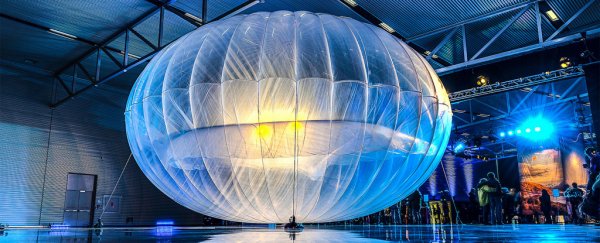Google's Project Loon is a massively ambitious plan to provide Internet connectivity to areas of the planet that don't already enjoy good access to the web. How? Via a huge fleet of helium balloons that hang in the stratosphere 20 kilometres above the surface, assembling to form a high-tech communication network that beams the web to the surface.
And the undertaking is only getting more ambitious, with the company announcing this week that it plans to circle the planet with a ring of Project Loon balloons that will provide a perpetual data service for those living underneath its path.
It sounds like science fiction, but this isn't some faraway ethereal concept we're talking about. Google says it will do this next year, provided current tests work out as planned.
"[We need] about 300 balloons or so to make a continuous string around the world," Mike Cassidy, vice-president of Project Loon, told the BBC. "As one moves along with the wind out of range, another one comes to take its place. We hope next year to build our first continuous ring around the world, and to have some sort of continuous coverage for certain regions."
The first such ring will encircle an area above the Southern Hemisphere, with each of the 300 proposed balloons providing connectivity to the ground below in an area with a 40-kilometre diameter.
The superpressure balloons Google is working with have come a long way since the company announced the Project Loon concept back in 2013.
"In the early days, the balloons would last five or seven or 10 days. Now we have had balloons that have lasted as long as 187 days," said Cassidy. "We've also improved the launch process. It used to take 14 people an hour or two to launch a balloon. Now with an automated crane we can launch a balloon every 15 minutes with two or three people."
The connectivity at the ground provided by Project Loon has also been dramatically up-scaled. The service originally provided was akin to 3G cellular networks, but now the balloons can deliver data at speeds up to 10 megabits per second, equivalent to 4G mobile speeds in many parts of the world.
Cassidy says if all goes well with the 300 balloon ring, Project Loon will then begin rolling out to the first beta commercial customers, including Sri Lanka, which signed on for the service in July, and Indonesia, thanks to an agreement announced this week with three of the country's mobile network providers.
Given two-thirds of the world still don't have Internet access, we imagine there will be a long line of international customers hoping Project Loon floats their way next.
